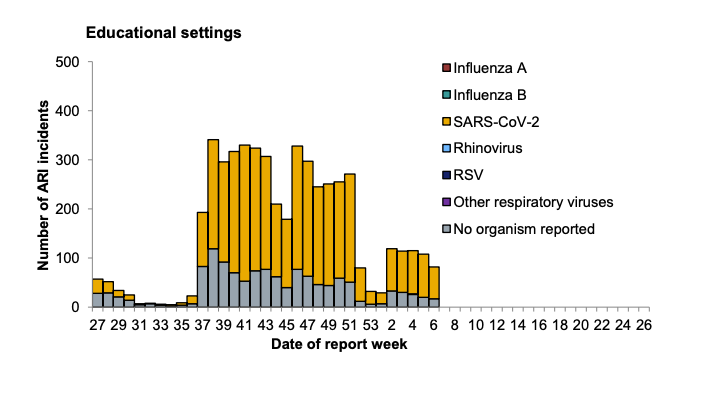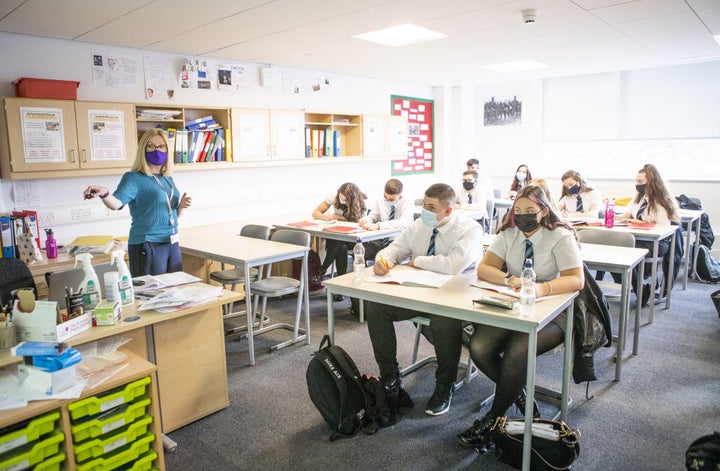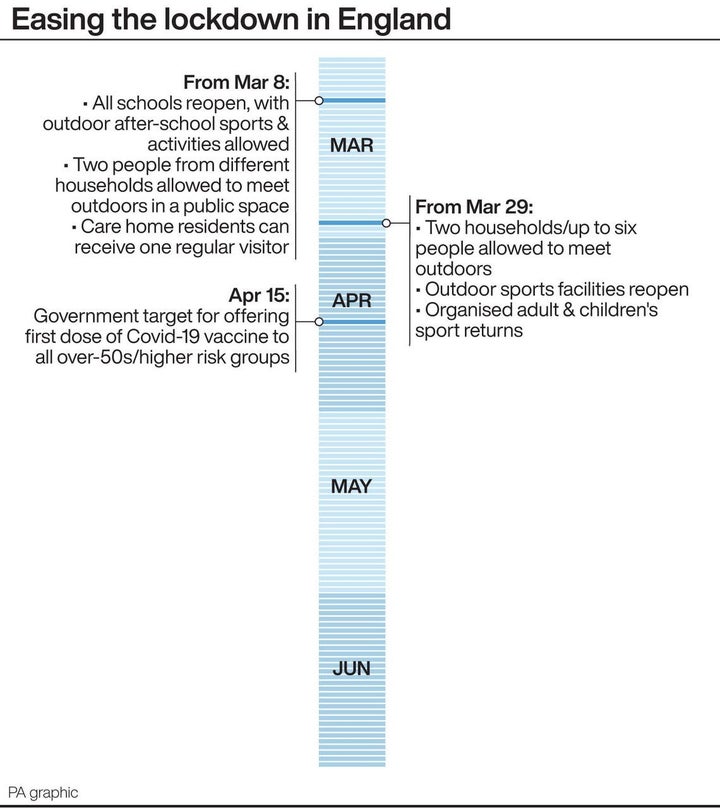Schools are finally set to reopen on March 8 in the first step of what the government has called a “cautious” path out of England’s third lockdown.
Here’s everything we know so far...
What’s happening on March 8?
Boris Johnson told MPs on Monday that all pupils in all year groups can go back to the classroom from March 8, with outdoor after-school sports and activities also allowed to restart.
This will be happening alongside a very slight easing of outdoor restrictions – people will be allowed to meet one-on-one to socialise outdoors, for example meeting for a picnic or drink.
Why are schools reopening first?
Schools have always been a priority for the government and in a series of tweets on Monday morning, Johnson explained why.
He said: “Our priority has always been getting children back into school which we know is crucial for their education as well as their mental and physical wellbeing, and we will also be prioritising ways for people to reunite with loved ones safely.”
Will this cause a spike in cases?
Almost certainly yes, and we just have to look back to last September when schools opened for the start of the new school year to see what might happen.
A report released in November by the Scientific Advisory Group for Emergencies (Sage), recorded more than 1,000 clusters and outbreaks of coronavirus in educational settings.
While school-aged children are at the lowest risk for severe disease caused by Covid-19, the concern lies in them transmitting the disease to parents and carers and in turn, the wider community.
The report found children aged 12 to 16 played a “significantly higher role” in introducing infection into households than younger children.
But it also said the role of schools in community transmission “cannot be easily considered in isolation from wider measures” as potential increases may emerge because opening schools enables other mixing to occur – such as parents being able to go to work, or socialising after dropping off children.
Overall, Sage has said it is unclear how much schools impact on transmission of the virus.
Cases in schools have obviously dropped in lockdown as schools were largely closed, but the partial reopening for some students has meant outbreaks have not been eliminated entirely. Public Health England (PHE) data on the number of acute respiratory infection incidents shows 66 outbreaks in educational settings in the week ending February 14.

Despite schools remaining open only for vulnerable children and the children of key workers, alongside a new category for children unable to study at home, teachers and parents reported much higher rates of attendance during the current lockdown.
What happens if there is a spike in cases?
The government’s hope is that this would be offset by continued restrictions in other areas of our daily lives, hence the phased rollout of Johnson’s plan.

Is there an alternative?
A coalition of education unions and professional bodies has called for a phased reopening of schools rather than allowing all pupils back at the same time.
In a joint statement released last week, nine groups said they are “increasingly concerned” with the plan, which it described as a “reckless course of action”.
“It could trigger another spike in Covid infections, prolong the disruption of education and risk throwing away the hard-won progress made in suppressing the virus over the course of the latest lockdown,” the statement said.
It added: “What we do know is that the full reopening of schools will bring nearly 10 million pupils and staff into circulation in England – close to one-fifth of the population. This is not a small easing of lockdown restrictions. It is a massive step.
“These factors necessitate a cautious approach with wider school and college opening phased over a period of time.”
The GMB union, which represents school support staff, has called for fully revised risk assessments to be published for a full return to school, and said the government should fund additional safety measures.
National secretary Rehana Azam said: “School support staff have been in classrooms throughout the pandemic – schools have not been closed. Many school workers are telling us that, without additional protective measures, more space and proper support, a full return won’t work.
“We need full central government funding for enhanced safety measures, extra PPE in primary, early years and Send settings which are now higher risk – and for school workers to be vaccinated as soon as possible.”

What about mass testing?
Speaking to the Commons on Monday, Johnson said the return of students will be supported by twice weekly testing of secondary school and college pupils.
All households with school children, members of their support and childcare bubbles, and those in related occupations will also be encouraged to get tested regularly.
This has been met with stiff resistance from unions, with Mary Bousted, joint general secretary of the National Education Union (NEU), warning parents may not want to test their children at home as it could have implications for their paid work.
She told PA Media last week: “I think again that is fraught with difficulty as well because I think there’s been a big parental reaction to the notion that they’ve got to swab their children up their noses or down their throats.
“And of course lots of parents probably will not want to know if their child has got Covid because they will be asymptomatic and that has implications for them being able to work.
“I do think that’s a huge ask and if the government is going to make that ask of parents – and if it’s going to make any asks to schools in terms of testing – it really has to be very clear about the science on which that is based, because otherwise it will be difficult to make it happen.”
Will students have to wear face masks?
The government is recommending face masks be worn indoors in secondary schools unless 2m social distancing can be maintained. Adults either working in or visiting primary schools should also wear a face covering.
What are other countries doing?
Scotland and Wales are taking markedly more cautious approaches, with a phased return starting this week.
Geoff Barton, general secretary of the Association of School and College Leaders (ASCL), said: “We share the government’s aim of bringing all children back to the classroom as soon as possible, but we remain concerned about the idea of a ‘big bang’ approach of a full return of pupils all at the same time.
“This is very different from the plans in Scotland, Wales, and Northern Ireland in which a phased return is planned, and it is difficult to understand why the approach in England would go so much further.
Barton added: “It is crucial that the return of all pupils to face-to-face education is safe and sustainable and that we don’t end up prolonging a cycle of disruption.”

